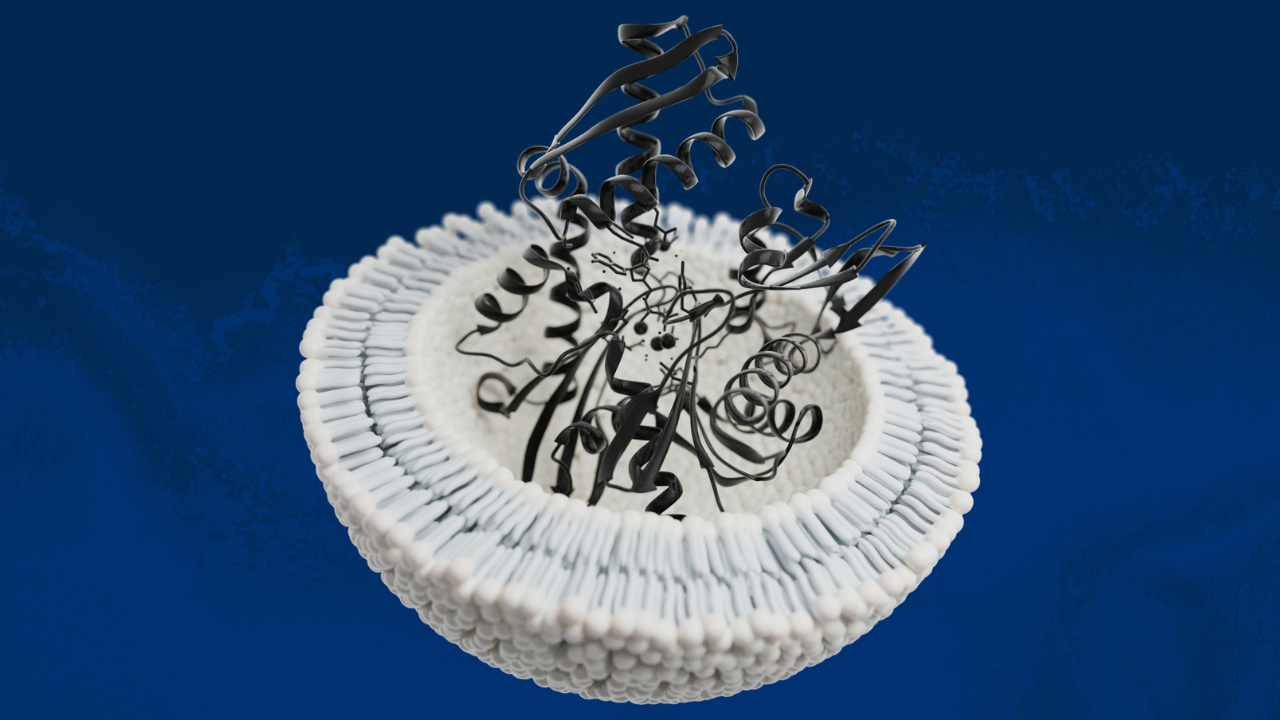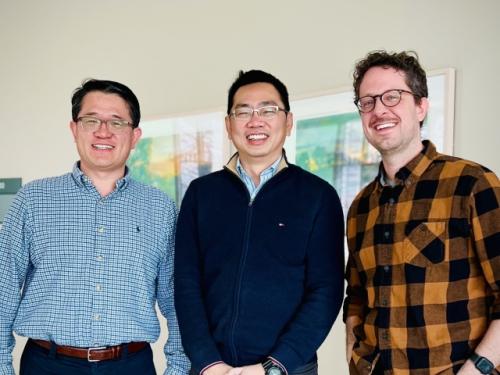
NIH Awards $2.3M to ‘Detangle’ Complexity of Extracellular Vesicles
Research hopes to reveal nanoparticles' functional components by building them like Lego
Link to the original article published by Matt Marcure can be found here.

Extracellular vesicles, or EVs, are nanoparticles released by every known cell and relay important messages across the human body — but how they exactly function is not well understood. Professors at the University of California, Davis, seek to change that.
The National Institute of Biomedical Imaging and Bioengineering, or NIBIB, has awarded a $2.3 million research grant to Department of Biomedical Engineering professors Cheemeng Tan, Randy Carney and Aijun Wang on a collaborative project that poses to demystify the functional components of EVs and their potential medical applications. NIBIB is the arm of the National Institutes of Health that focuses on how engineering can deepen our understanding of diseases and transform their prevention, detection, diagnosis and treatment.
"The NIBIB award will allow us to establish a new synthetic biology platform that will hopefully benefit the broad EV community in two ways," Tan said. "First, the platform could be used to reveal critical functional features of natural EVs — most of which are currently very hard to define. Second, the platform could be adapted to study EVs across many sources or biomedical applications."
Tan leads the charge on developing the synthetic biology platform, which builds off his lab's past research into cell-free protein synthesis. The new platform will be able to produce EVs that mimic those naturally found in our bodies.
These artificial vesicles will specifically imitate those released by mesenchymal stem cells — important for skeletal tissues like cartilage and bone — due to their inherent therapeutic activity and high safety profile in humans.
The platform will allow the team to reconstitute extracellular vesicles as they see fit, adding in or leaving out molecules found in naturally occurring EVs like Lego blocks. This aspect of the synthetic biology platform will facilitate research into how constituent components function in EVs.
"With Tan’s technology, where we can put molecule one and molecule two into two different vesicles or maybe combine number three and number eight together, we can start to detangle their complexity," Carney said.
Up to this point, it has been tough to scale up EVs for medical applications due to their impressive heterogeneity. For example, one EV can contain hundreds of different biomolecules or more.
Carney will run the synthesized EVs and their copious permutations through a process known as high-throughput screening, which uses automation to rapidly test thousands of samples.
"What we are focusing on is that particle-to-particle heterogeneity," Carney said. "We're trying to figure out which biomolecules serve certain functions, which are cell waste, which are related to disease, and which are beneficial to human health."
Ultimately, the team wants to identify the parts of EVs important for drug delivery, and then, from those findings, develop synthetic EVs specialized for that purpose.
Wang, who has a cross-appointment in the Department of Surgery at UC Davis Health and expertise in developing stem cells and stem cell-based therapies for translational applications, hopes to employ and test these specially engineered EVs to treat different neurological diseases.
"One critical neurological disease is multiple sclerosis," Wang said. "Characterized by inflammation, demyelination and axonal degeneration in the central nervous system, it's hard to get one single therapeutic to treat all its symptoms. But we may be able to design synthetic EVs to tackle more than one factor of the disease simultaneously."
The team hopes those engineered EVs will cross the blood-brain barrier and interact with endangered cells in the central nervous system, a development that may prove very significant to the fields of regenerative and living medicine and the burgeoning study of EVs.